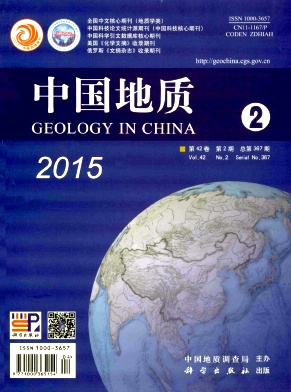LENG Qiu-feng1, TANG Ju-xing2, ZHENG Wen-bao2,3, ZHANG Jin-shu4, TANG Pan1, YAN Gang5, DONG Yu5. Re-Os dating of molybdenite from the Lakange porphyry Cu-Mo deposit in Tibet and its Geological Significance[J]. Geology in China, 2015, 42(2): 570-584.
| Citation: |
LENG Qiu-feng1, TANG Ju-xing2, ZHENG Wen-bao2,3, ZHANG Jin-shu4, TANG Pan1, YAN Gang5, DONG Yu5. Re-Os dating of molybdenite from the Lakange porphyry Cu-Mo deposit in Tibet and its Geological Significance[J]. Geology in China, 2015, 42(2): 570-584.
|
Re-Os dating of molybdenite from the Lakange porphyry Cu-Mo deposit in Tibet and its Geological Significance
-
1. College of Earth Sciences, Chengdu University of Technology, Chengdu 610059, Sichuan, China; 2.MLR Key Laboratory of Metallogeny and Mineral Resource Assessment, Institute of Mineral Resources, Chinese Academy of Geological Sciences, Beijing 100037, China; 3. China University of Geosciences, Beijing 100083, China; 4. Tibet Institute of Geological Survey, Lhasa 850000, Tibet, China; 5. No. 6 Geological Party, Tibet Bureau of Geological Exploration and Exploitation of Mineral Resources, Doilujngdeqen 851400, Tibet, China
-
Abstract
Abstract: The Lakange porphyry Cu-Mo deposit in the Gangdise metallogenic belt of central and southern East Lhasa block within the Tethys tectonic domain is one of the key deposits in the Tibet Plateau geological survey project evaluation in recent years. Re-Os isotopic dating technique was applied for determination of mineralization events, and eight molybdenite samples were analyzed for Re-Os isotopic compositions, with the model ages obtained ranging from (13.20±0.20) Ma to (13.64±0.21) Ma, and the isochron age being(13.12±0.44)Ma which represents the metallogenic age of the Lakange porphyry Cu-Mo deposit, indicating Miocene. The Re content of the molybdenite is 343.6×10-6-835.7×10-6, with an average of 557.8×10-6, suggesting that the metallogenic material originated from a source with mantle components. The Lakange porphyry Cu-Mo deposit was formed in a stretching background of India-Asia continental collision orogenic collision, the age (17-12 Ma) is identical with ages of numerous porphyry-skarn mineralization systems in the eastern of Gangdise metallogenic belt, and is 2-3 Ma younger than ages of the porphyry-skarn copper polymetallic deposits in the same ore concentration area, such as Jiama, Qulong and Bangpu, with the formation controlled by the same metallogenic geodynamics setting.
-

-
-
Access History







 DownLoad:
DownLoad: